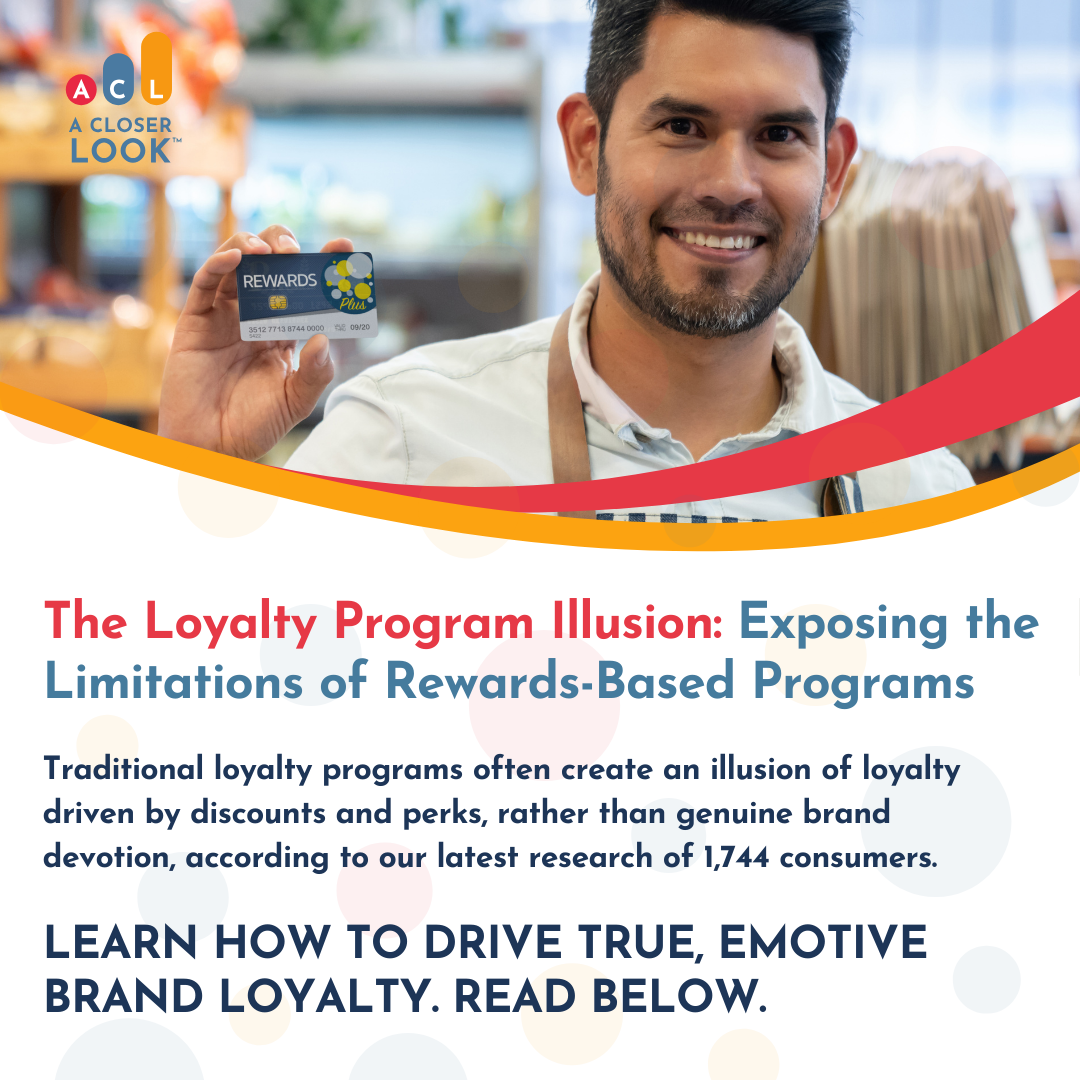
The Loyalty Program Illusion: Exposing the Limitations of Rewards-Based Programs
Executive Summary
A Closer Look conducted an extensive survey of 1,744 consumers to gain insights into their behavior, preferences, and perceptions regarding brand loyalty programs. The findings reveal the limitations of traditional loyalty programs in fostering true, emotional loyalty.
Rewards-based programs create an illusion of loyalty, which is primarily driven by discounts and free perks, rather than genuine brand devotion.
To break free from the loyalty program illusion and cultivate authentic customer relationships, brands must transcend transactional loyalty and focus on strategies that prioritize personalized experiences, meaningful customer connections, and non-price-related benefits.
Introduction
Loyalty programs have become a ubiquitous strategy for brands seeking to attract, retain, and engage customers. However, the effectiveness of these programs in building authentic, long-lasting customer relationships is often questionable.
This market research report aims to expose the loyalty program illusion and provide brands with actionable insights to redefine customer loyalty in the age of authenticity.
By examining consumer behavior, preferences, and expectations, we uncover the limitations of rewards-based programs and propose a paradigm shift in how brands approach customer loyalty.
Methodology
A Closer Look surveyed its first-party database of 1,744 consumers using a questionnaire consisting of 10 questions. The questions covered various aspects of brand loyalty programs, including the primary deciding factors for purchases, loyalty program adoption rates, reward preferences, purchase frequency, communication preferences, and industry-specific usage. Additionally, an open-ended question was included to gather qualitative insights on what brands can do to earn customer loyalty.
Detailed Findings
1. Primary Deciding Factors for Purchases
The survey findings highlight that loyalty programs, in their current form, primarily drive transactional loyalty rather than emotional loyalty.
Only 3.8% of respondents feel that a loyalty program drives their purchase decisions, with price being the main factor for 54% of consumers.
This emphasis on price-related benefits underscores the limitations of rewards-based programs in fostering genuine brand devotion. To break free from the loyalty program illusion, brands must shift their focus from transactional rewards to strategies that prioritize personalized experiences, meaningful customer connections, and non-price-related benefits.
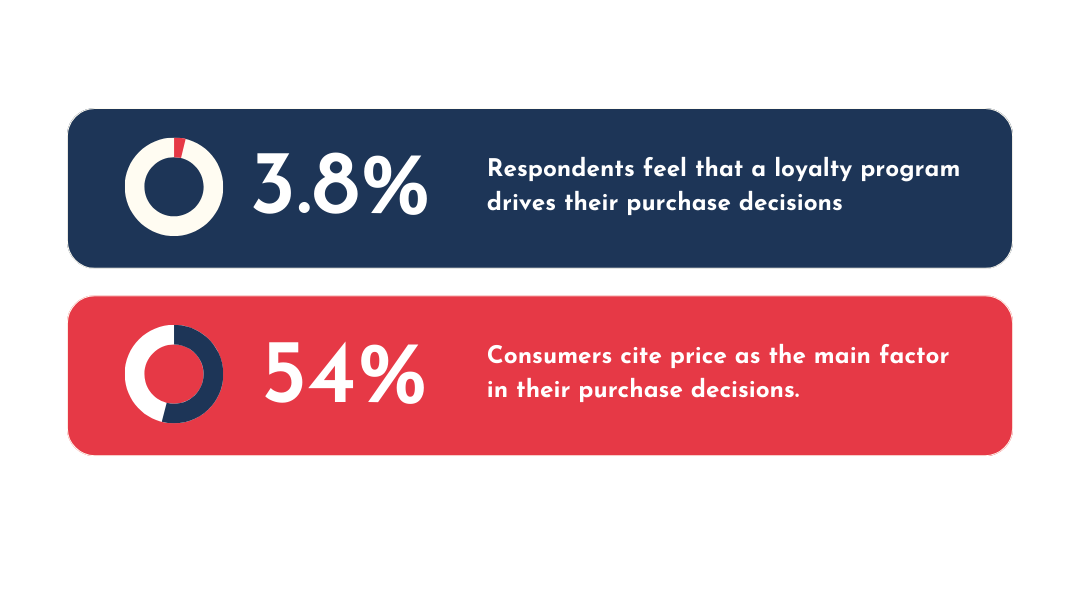
2. Loyalty Program Adoption
While 90% of respondents are open to signing up for loyalty programs, this statistic presents an incomplete picture. Firstly, 10% of potential customers remain unreached by rewards-based programs. Moreover, openness to signing up does not guarantee sign up or active participation. Our study reveals that consumers have limits on the number of loyalty programs they actually join, and even fewer regularly engage with these programs. This insight exposes the limitations of relying on loyalty programs to attract and retain customers, emphasizing the need for brands to transcend transactional loyalty and adopt a more holistic approach to customer engagement.
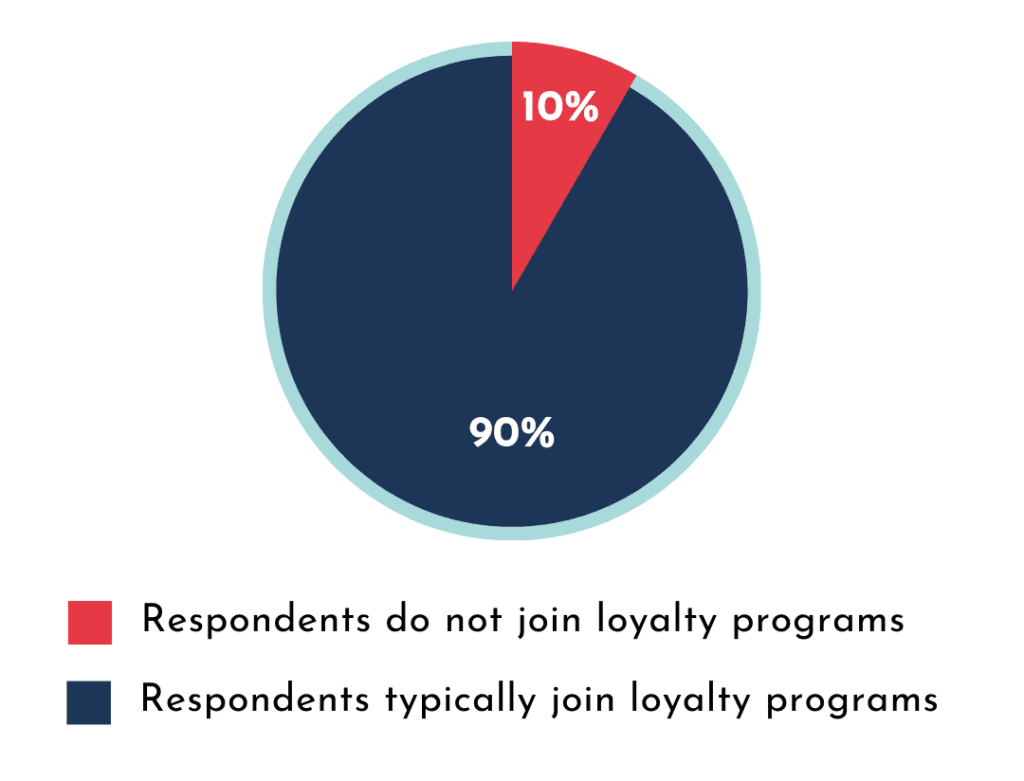
3. Loyalty Program Membership
The findings reveal that nearly 50% of respondents belong to 6 or fewer loyalty programs, indicating that customers are becoming increasingly selective in their program memberships.
As brands compete for a spot in their customers’ top preferred loyalty programs, they must transcend transactional loyalty and differentiate themselves through personalized rewards, exclusive experiences, and superior customer service.
Only 32% of respondents belong to 10 or more loyalty programs, further emphasizing the need for brands to stand out and offer compelling value beyond discounts and points.
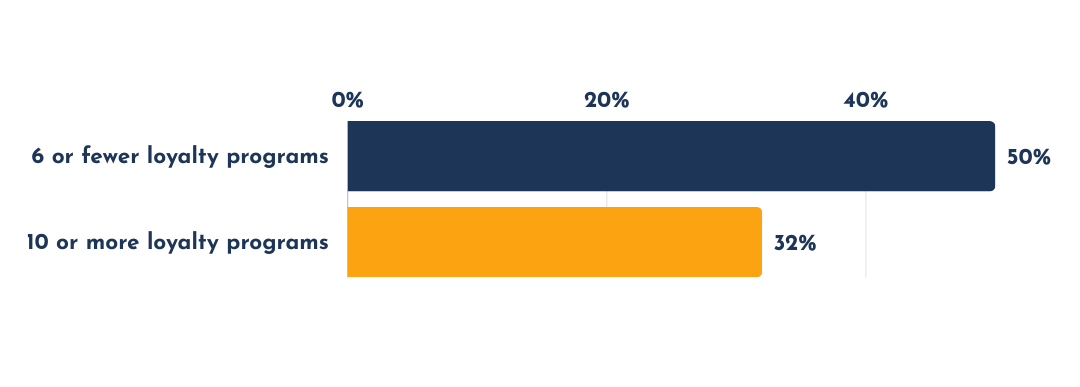
4. Communication Preferences
The survey data exposes the limitations of email communications in building emotional loyalty, with 30.3% of respondents opting in for emails only and 46.2% opting in for both texts and emails. However, 9.4% of respondents do not opt in to any texts or emails from loyalty programs, highlighting the need for brands to diversify their communication channels and prioritize methods that encourage genuine customer feedback and engagement.
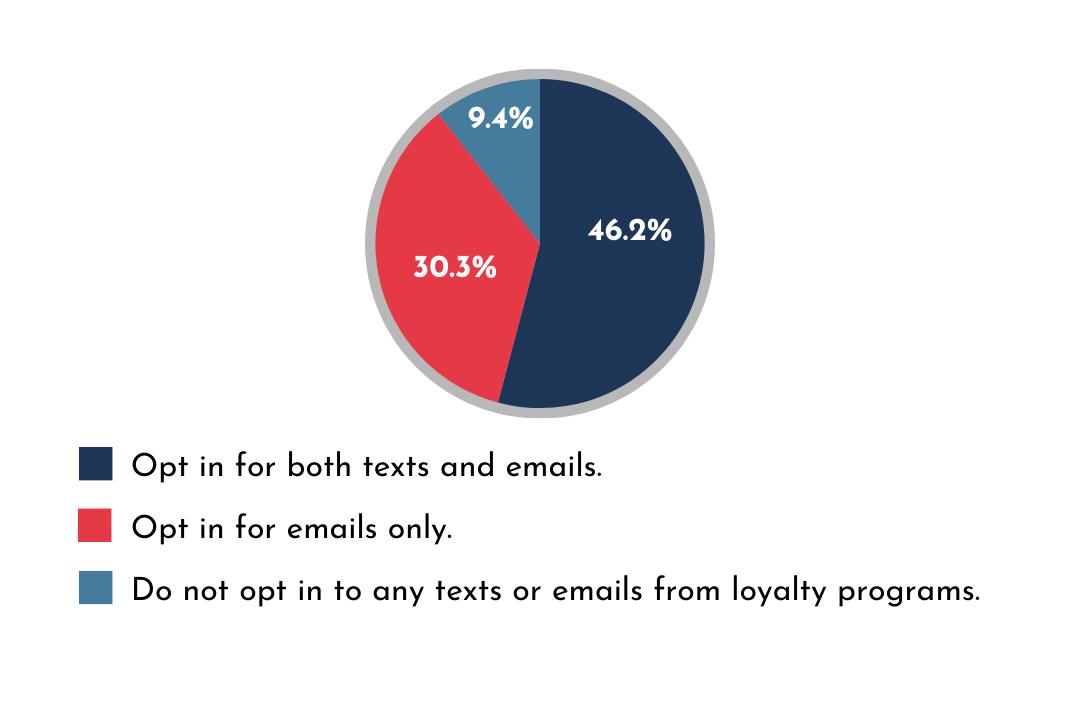
5. Loyalty App Adoption and Usage
While 74.7% of respondents download loyalty apps when available, 25.3% do not, indicating that a significant portion of customers may not be fully engaged with brands’ digital loyalty offerings. Among those who download loyalty apps, usage frequency varies, with 19.8% always using the app, 27.6% using it very often, 20.3% using it often, and the remaining using it less frequently. This insight suggests that brands must focus on creating user-friendly and valuable app experiences to drive consistent engagement and foster emotional loyalty.
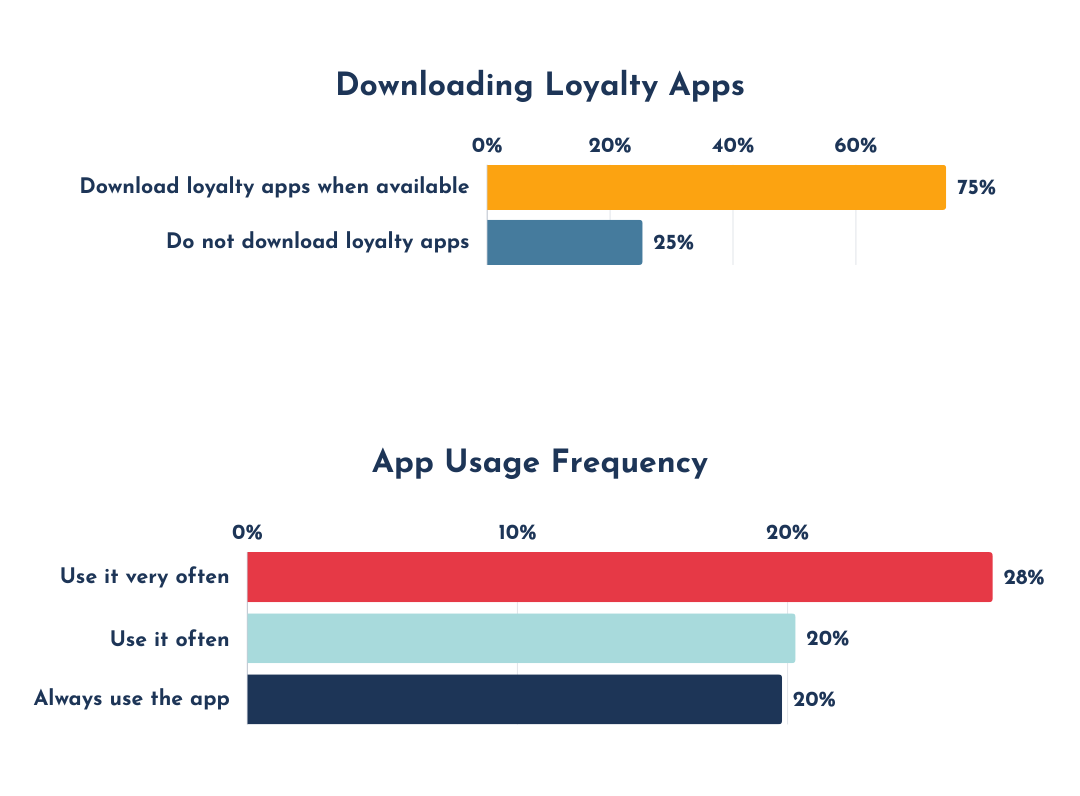
6. Perceived Benefits of Loyalty Programs
A staggering 91% of the reasons consumers use loyalty programs are related to discounts, free products, or free shipping, exposing the transactional nature of rewards-based programs.
Only 9% of respondents use loyalty programs for non-price-related benefits, highlighting the need for companies to redefine customer loyalty in the age of artificial intelligence and brand authenticity.
To cultivate emotional loyalty that withstands competitive pressures, brands must shift their focus from transactional rewards to delivering exceptional customer experiences and fostering genuine connections.
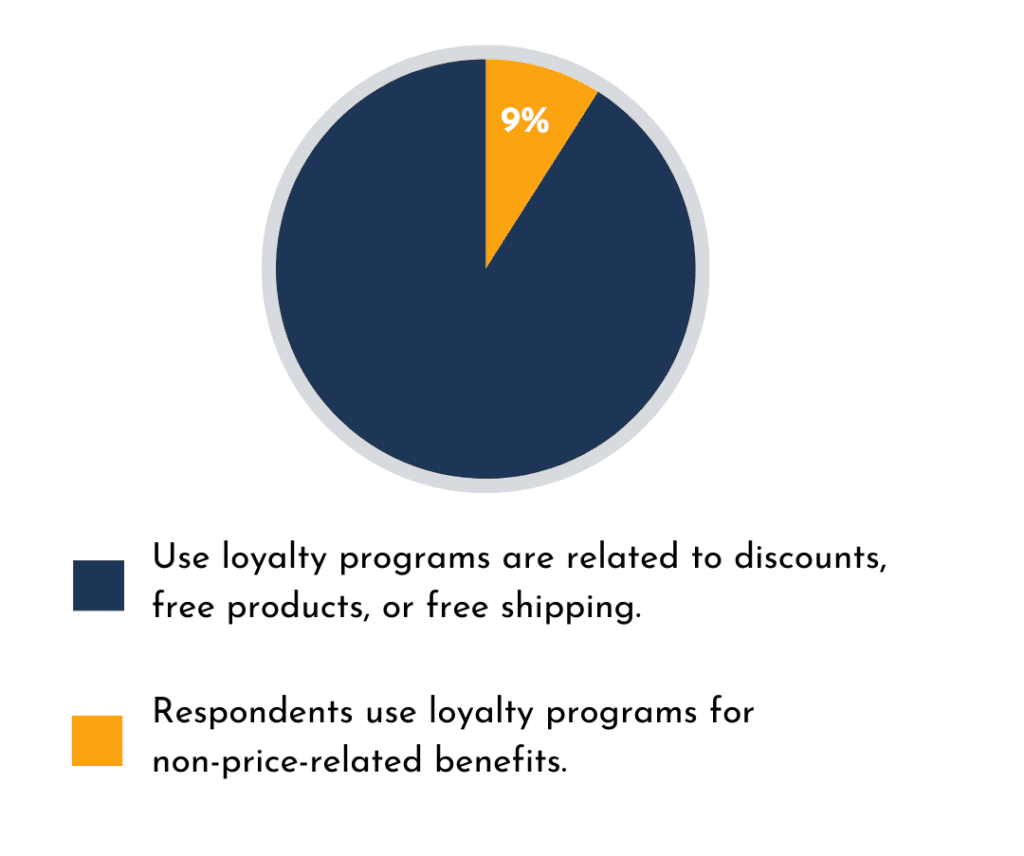
7. Purchase Frequency and Loyalty Program Usage
The survey reveals that 74.2% of respondents purchase from their most used loyalty program/brand at least 3-5 times per month, with 29.9% purchasing 1-2 times per week. This high purchase frequency among loyalty program members emphasizes the potential for rewards-based programs to drive short-term sales.
However, to foster long-term emotional loyalty, brands must look beyond transaction-driven behavior and focus on creating meaningful customer experiences that resonate on a deeper level.
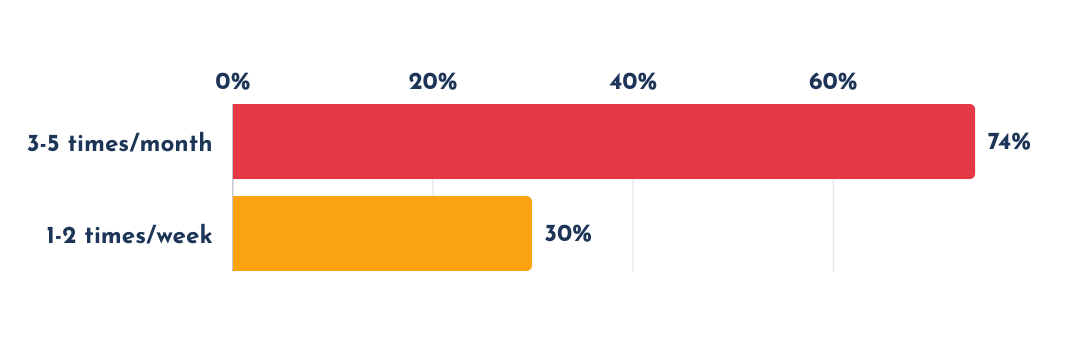
8. Likelihood of Purchase with Loyalty Program
74% of respondents are either extremely likely or very likely to purchase from a brand if they currently use its loyalty program.
While this finding suggests that loyalty programs can influence purchase decisions, it is crucial to recognize that this influence is primarily driven by transactional benefits rather than genuine brand devotion. To transcend the loyalty program illusion, brands must strive to create emotional connections that extend beyond rewards and discounts.
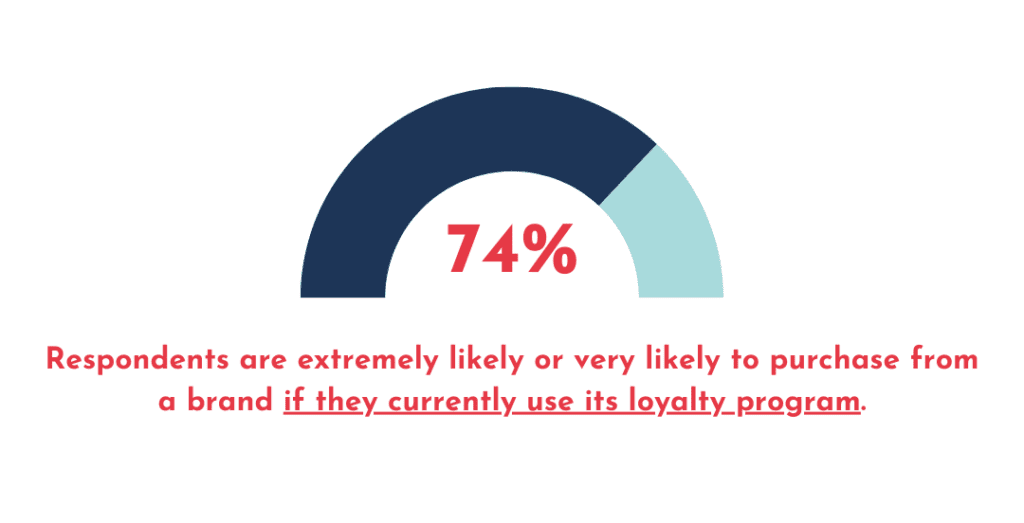
9. Industry-Specific Loyalty Program Usage
The findings reveal that restaurant/fast food/coffee shops (36%), grocery (31.7%), and retail (21%) have the highest loyalty program usage among respondents. This insight highlights the prevalence of rewards-based programs in these industries and the need for brands to differentiate themselves by offering unique, personalized experiences that resonate with customers on an emotional level.
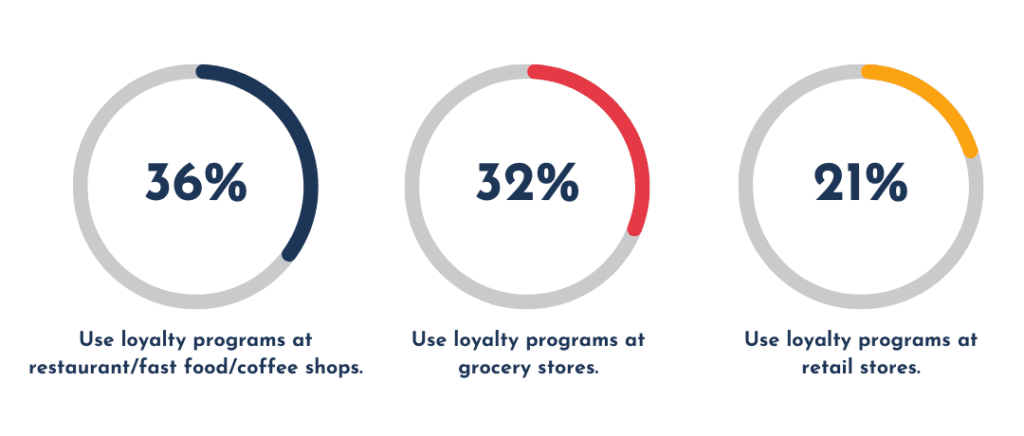
10. Earning Customer Loyalty: Qualitative Insights
The open-ended question asking respondents what brands could do to earn their loyalty and become their go-to choice yielded valuable qualitative insights.
The most frequently mentioned themes centered around providing tangible rewards like discounts, free products, and redeemable points, along with offering a loyalty program that is easy to use and provides meaningful benefits tailored to customers’ interests.
While these findings underscore the importance of transactional benefits in driving short-term loyalty, they also highlight the need for brands to focus on creating exceptional customer experiences, fostering emotional connections, and maintaining competitive pricing and product quality to achieve long-term success.
11. Overcoming the Loyalty Program Illusion
The survey findings collectively expose the limitations of rewards-based programs in fostering genuine brand devotion and emotional loyalty.
To break free from the loyalty program illusion, brands must adopt a holistic approach to customer engagement that prioritizes personalized experiences, meaningful connections, and non-price-related benefits.
By implementing tactics such as SMS-enabled feedback programs, focused feedback studies, market research, and mystery shopping, brands can gain valuable insights into their customers’ true preferences and pain points, enabling them to create loyalty strategies that resonate on a deeper, more authentic level.
Recommendations for Brands
1. Transcend transactional loyalty by shifting focus from rewards-based programs to personalized experiences, meaningful customer connections, and non-price-related benefits.
2. Implement tactics that allow brands to listen to their customers’ genuine feedback and preferences, such as SMS-enabled feedback programs, focused feedback studies, market research, and mystery shopping, to unveil the true drivers of emotional loyalty.
3. Adopt a multi-channel approach to customer engagement, leveraging various communication channels, such as SMS, email, social media, and in-store interactions, to break free from the limitations of rewards-based programs.
4. Diversify communication channels and prioritize methods that encourage genuine customer feedback, such as SMS-enabled feedback programs, to capture real-time, authentic customer opinions and preferences.
5. Conduct focused feedback studies, market research, and mystery shopping to gain insights into customers’ unique preferences and tailor loyalty programs to meet those needs, fostering emotional loyalty that goes beyond the loyalty program illusion.
6. Offer personalized rewards, exclusive experiences, and superior customer service to differentiate brands from competitors and cultivate authentic customer relationships that transcend transactional loyalty.
Conclusion
The insights derived from A Closer Look’s market research survey expose the loyalty program illusion and its limitations in building authentic customer loyalty.
While rewards-based programs are prevalent, they primarily foster transactional loyalty driven by discounts and free perks, leaving brands vulnerable to competitors with more attractive offers.
To redefine customer loyalty in the age of authenticity, brands must break free from the loyalty program illusion and adopt a more holistic approach to customer relationships.
By implementing tactics that allow them to listen to their customers’ genuine feedback and preferences, such as SMS-enabled feedback programs, focused feedback studies, market research, and mystery shopping, brands can unveil the true drivers of emotional loyalty.
Armed with this knowledge, brands can transcend transactional loyalty and develop loyalty programs that offer personalized, non-price-related benefits, demonstrating a deep understanding of their customers and fostering genuine connections. By embracing these strategies, brands can cultivate emotional loyalty that withstands competitive pressures and drives long-term growth and success in an increasingly authentic marketplace.
Learn more about conducting Focused Feedback Surveys with A Closer Look’s first-party consumer database, or with your own brand’s customers, to gain insights about consumer behaviors and trends.
Contact A Closer Look today to learn more about ways to drive true emotive brand loyalty that surpasses mere price discounts.